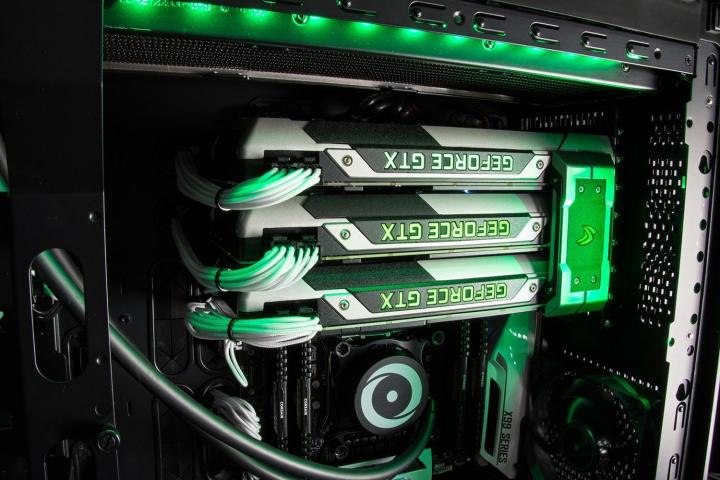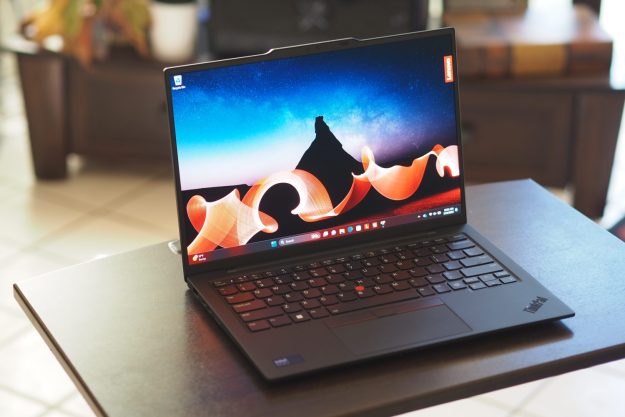
The modern personal computer is a wonder that defeats the capability of any other household device by an order of magnitude.
I’m certainly not the only person to notice this. Brad Chacos, senior editor at PC world, noted in 2013 that “pure CPU performance isn’t accelerating fast enough to encourage recurring PC sales.” And the MIT Technology Review noted this trend as early as 2010. Processor performance has increased over the last five years, by as much as 50 percent on a per-clock basis, depending on the test conducted. But such gains are seen as stagnant in an industry that once managed a similar leap every couple of years.
Today’s slower pace is often considered a reason to hold on to old systems until they’re run into the ground. That’s understandable. Computers aren’t cheap. But I think the gains that PCs see today are, in fact, as incredible as those enjoyed a decade ago. Performance has not stalled, and a PC remains by far the most powerful piece of technology you can own in your home.
More cores, more power
Maximum PC recently pitted the performance of Bloomfield, a consumer architecture from 2008, against a brand new rig running the latest Core i7-6700K processor. While the new chip was up to twice as quick, the gain was, in some tests, surprisingly small. PCMark’s home and creative benchmarks, for example, actually came out in favor of the Bloomfield-based system.
The results are interesting, and make sense from a certain perspective. The i7-965 used by Maximum PC is a close approximation to the Core i7-6700K in terms of specification. It has four cores, eight processing threads, and its clock speed of 3.2GHz is about as close as chips from that era come to the 4GHz 6700K.

But, in another respect, the comparison isn’t quite right. The i7-965 was the absolute cutting-edge at the time it was released, and it was priced at $999. Skylake’s Core i7, on the other hand, is only $350. A more proper comparison is Intel’s Core i7-5960X, an eight-core, sixteen-thread monstrosity with a maximum Turbo clock of 3.5GHz. It currently sells for $1,049.
And that chip blows the doors off anything that doesn’t have Xeon (Intel’s brand of server-centric chips). In our own tests it’s as much as 80 percent quicker than the i7-6700K, but The Tech Report’s huge library of legacy results do an even better job of demonstrating the 5960X’s speed. In any multi-core test – and modern, demanding programs are indeed designed for multiple cores – the chip is wondrously quick.
And that boon isn’t reserved for the cutting edge. Back when Broadwell came out, the cheapest quad-core was $284. Today, the least expensive is $185, and it offers a much higher clock speed. In the laptop world, meanwhile, quad-core processors have become more practical, and more widely adopted as a result.
Graphics gains
Intel has been relatively upfront about the incremental gains of its recent desktop and notebook chips. It has generally touted compute gains somewhere around five to 15 percent in press releases and slides.
Improved performance doesn’t just mean better benchmark scores.
There is another area where the company still touts big, double-digit gains, and that’s graphics. AMD and Nvidia have also claimed major generation leaps. The Nvidia GTX 980, for example, is about 20 to 40 percent quicker than the preceding GTX 780, depending on the game.
Obviously, such gains matter to gamers. Today’s games are stunningly beautiful, particularly when they’re designed to take the PC’s strength to their advantage. Grand Theft Auto V and The Witcher 3 offer detailed vistas that make Skyrim look ancient, while Project Cars delivers incredible detail. A perfect reproduction of reality is still out of our grasp, but we’re coming close.
These gains also matter to the everyday user. In the past few years we’ve seen display resolution take a major step forward on a variety of platforms. Phones now offer up to and above 300 pixels per inch. Tablets are routinely packing 2,560 x 1,600 screens. And PCs – both

These advancements improve image quality for the everyday user, and they’re only possible thanks to quicker, more efficient graphics. An OS desktop may not look demanding to render, but it’s no pushover – which is why the 5K iMac packs a quite powerful Radeon card as the default option, and why Intel IGPs only recently gained
Sometimes, improved performance doesn’t just mean better benchmark scores. It also means new features and capabilities that weren’t possible before. That’s certainly the case with graphics and the rapid introduction of pixel-dense displays.
Solid state drives jump to PCI speed
The rise of solid state storage was the most important enhancement in consumer PC performance of the last decade. Prior to its introduction, asking for data from a hard drive was often a laborious process that evolved much whirring of drive heads and spinning of disks. Now that’s been replaced by easy, silent, lightning-quick access times.
And the solid state revolution hasn’t halted. Great progress has been made. New controllers are quicker and more reliable than before. SATA’s bandwidth jumped to handle better storage, and more recently a new standard called Non-Volatile Memory Express (NVMe) was introduced, offering even greater bandwidth.

Such improvements have hugely improved the user experience. Programs load within milliseconds, drive searches are quick, and even large files can be transferred from one location to another in minutes, even seconds. Five years ago, a cutting edge solid state drive could manage read speeds of around 200 megabytes per second. Today, the best consumer drives read over 1,500 megabytes per second, and access times have been cut by up to half.
And that’s just the beginning. Intel and Micron announced an all-new storage technology called 3D XPoint at the end of July. It offers read and write speeds on par with DDR RAM, but is non-volatile, which means it can be depended on for long term storage. When this technology starts to hit the mainstream it could fundamentally change how consumer PC storage works, providing instant access to everything stored on your computer.
Conclusion
It’s true that a quick computer is no longer needed for an enjoyable day-to-day experience. Most desktops are adequate for web browsing, basic productivity, and light gaming. They’ll play 1080p video all day without breaking a sweat and chew through spreadsheets like a fat kid eating cake.
The fact performance isn’t as needed as it once was doesn’t mean advancement has stalled, however. A modern, high-end desktop is shockingly capable. It can model detailed 3D graphics in real time, store or read over a gigabyte of data every second, and run multiple instances of the world’s most demanding productivity software.
No, most people don’t need such power. But that doesn’t take away from its existence, or make it less impressive. The modern personal computer is a wonder that defeats the capability of any other household device by an order of magnitude, and there’s no chance of it losing that lead any time soon.
Editors' Recommendations
- If you think PCs are dying, you haven’t been paying attention
- World’s first 200TB SSD is nearly here, but you can’t use it



